With sail-and-oar boats it’s common to use the rudder while sailing and remove it, retract it, or let it trail, idle, while rowing. There are times when a rudder can be an asset while you’re at the oars.
The Gokstad faering I built for a 1,000-mile row up the Inside Passage of British Columbia and Alaska was a very well-mannered boat, but with two of us rowing I often found myself pulling harder on one side to maintain a straight course. It’s all too easy to assume it’s the other rower who’s making the corrections necessary, but leveling accusations against a partner isn’t good for crew morale. I made a small rudder especially for rowing and connected its tiller with two lines to a footboard tiller. That kept the peace aboard the boat and allowed both of us to row each in our own way without quarreling about someone putting uneven pressure on the oars.
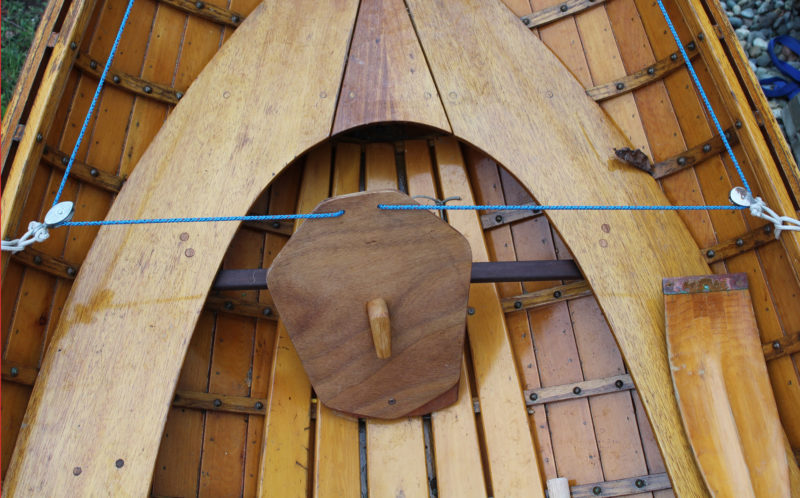
The plywood plate turned out to be awkward to operate and there was little need for keeping it at a fixed angle with the pressure of my feet.
Rowing in a crosswind can also require working at the oars to hold a course. I like to row my Whitehall from the aft rowing station—I prefer the stretcher I’ve rigged there and the absence of a thwart over my shins, the problem I have at the center rowing station. With my weight aft, the bow rides high and is prone to falling off in a crosswind; I have to pull harder on the leeward oar. I already had a footboard on the stretcher, so rigging it with a foot-controlled tiller was easy. A new tiller line, a pair of pulleys, two bits of wood, and a bolt were all it took. I’ve rigged the steering system with a yoke on the rudderhead, but it would be just as easy to attach the lines to a tiller.
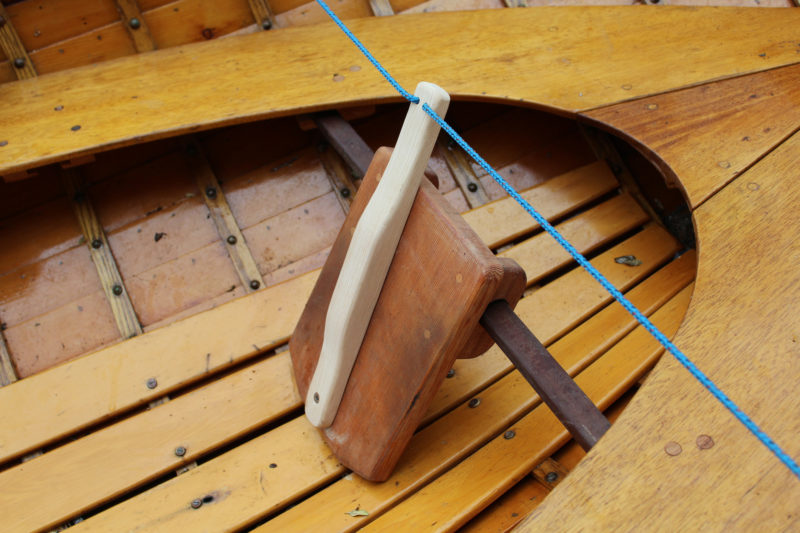
A simple stick as the tiller is easier to operate and allows the rudder to swing freely until a course correction is required.
Initially I used a plywood plate for the “tiller” so the pressure of my feet would keep it from shifting. The idea was to hold the rudder at a bit of an angle to counter weathercocking but steering with it was a bit awkward because I had to take the pressure off both feet to move the plate. And rowing in wind and waves required only momentary angling of the rudder to make course corrections. Most of the time I didn’t need to steer and the rudder could trail freely. The new version of the system uses an ash stick and is much easier to operate.
A rudder will add a bit of drag but won’t slow you down as much as putting most of your effort on one side of the boat. Many years ago, I was leading a race in a kayak that had a rudder. To keep drag to a minimum I hadn’t deployed the rudder. That worked to my advantage for most of the course where the wind was on the nose. The last hundred yards of the course were across the wind, but I didn’t want to pause to deploy it and lose ground to the kayaker trailing me. I fought the weathercocking by paddling hard on the windward side. It gave the advantage to the other competitor, who had his rudder deployed, and he beat me to the finish line.
The Whitehall has always been a pleasure to row since I built it in 1983, but the recent adding stretchers, a forward-view mirror, a sliding seat, and now stretcher steering are all improvements that I wish I’d made a long time ago. ![]()

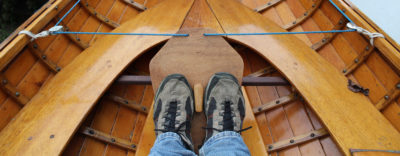

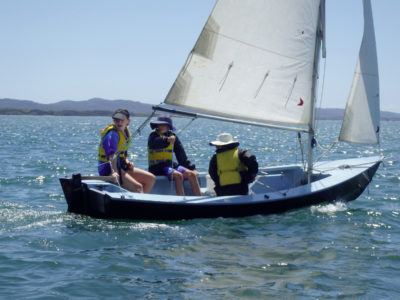
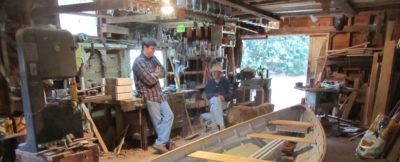
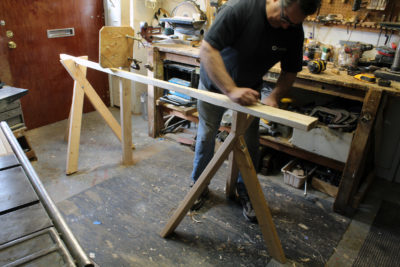
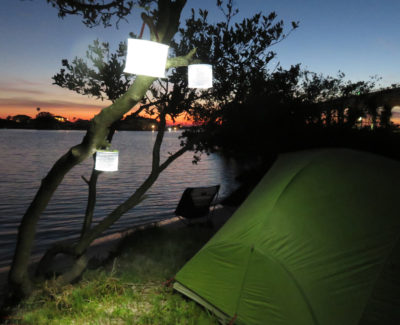
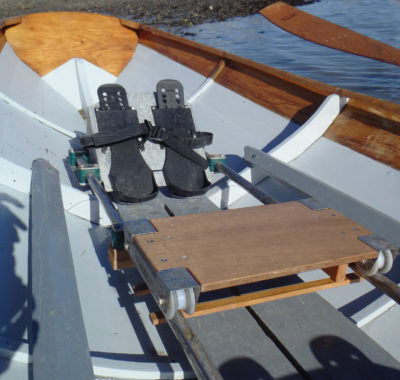
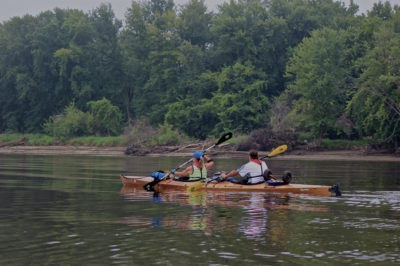
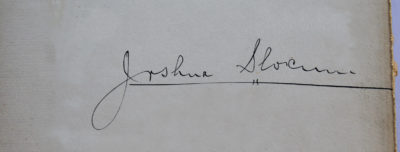
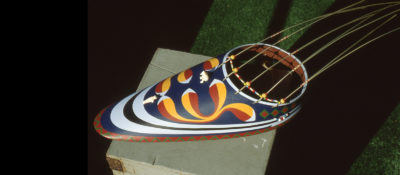
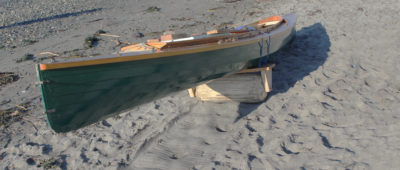
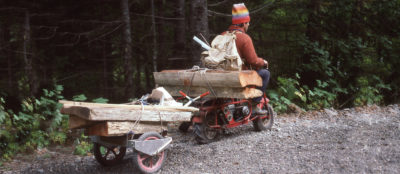
Superbly written and helpful article, thank you, and an elegant boat you’ve built there.
I too have a Whitehall, 17′ of strip-planked elegance and joy to row and sail. The rudder slides up and down on a bronze-rod “pintle.” Down is good for extra lateral resistance for sailing like a witch. Up brings the bottom of the rudder in line with the keel, still enough to steer but much less resistance for rowing.
I sometimes get the feeling that with rudder lashed in the center, or slightly off center allowing for crosswind, increases waterline length and speed slightly. Could that be true with the keel being extended that extra foot?
Whitehalls are great aren’t they, with their plumb bow and long, slim wetted area?
An appendage like a rudder doesn’t increase the length of a hull form. It will add friction, slowing the boat; at high speeds the wave-making characteristics of the hull have a greater impact on hull speed and a rudder won’t give the hull a longer, and thus faster, wave formation. If you’re feeling that you row faster with the rudder in place, especially angled slightly for a crosswind, it may be that you’re more able to put full power into both oars rather than pulling harder on one and easing up on the other to maintain your course.
A friend of mine worked out an even simpler system with his 16′ Shew & Burnham Whitehall. It would only work on fixed-seat boats because it relies on contact between the steering ropes and your calf. He ran his tiller ropes from his yoke forward to spots on the frames where he could lash the ends so that both were snug with the rudder centered; the secret was crossing them so they crossed forward of his calves. When he was rowing his calves were in light contact with the ropes. All you need to do was push down on one calf and the boat turned towards the calf side. I’d never seen this done before, or indeed invented by someone else.
I’m trying to rig something like this in my tandem sea kayak, because my legs are long and the foot peg system doesn’t work. Any advice for installing in an enclosed cockpit?
While touring kayaks use pivoting pedals for steering, sprint-racing kayaks use fixed footboards with a horizontal T-shaped tiller. The head of the T is forward of the foot board and equipped with pivot at the intersection of the T’s head and stem. The stem projects through a horizontal slot at the top of the foot board. You could make a rig like this and then use the foot-pedal tracks to anchor it.
Tiller systems made by Nelo and Kirton can serve as examples.
Very helpful. Thanks!